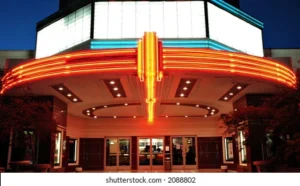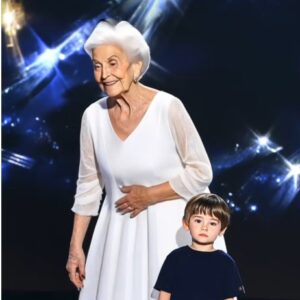
In today’s fast-paced, technology-driven world, it’s easy to look back with nostalgia on what we call the “good old times.” Whether it was a few decades ago or further back, these eras are often idealized for their simplicity, slower pace, and the sense of community they fostered. But what is it about these periods that makes them seem so much better, so much more fulfilling than today? While each generation has its unique experiences, there are common threads that tie the idea of the good old times together.
A Slower Pace of Life
One of the most significant differences between today and the past is the pace at which life moved. Without the constant buzzing of smartphones, the pings of notifications, and the pressure to be always online, people had more time to focus on what was happening around them. Life was slower, but it was richer in a different way.
People took the time to sit down and talk. Family dinners were a sacred time, free from the interruptions of television or social media. Neighbors knew each other and often dropped by for a chat or a cup of coffee. Conversations weren’t rushed; they were savored. This slower pace allowed for deeper connections and a more intimate understanding of those around us.

Adults and kids sitting on the grass in a garden
Stronger Communities and Face-to-Face Relationships
Back in the day, communities were closer-knit. People often lived in the same neighborhood for decades, forming deep and lasting bonds. It was common for people to borrow a cup of sugar from their neighbors or watch over each other’s kids. There was a sense of trust and mutual reliance that seems rarer in today’s more transient society.
Social gatherings weren’t organized via group texts or online events but through personal invitations. Churches, town squares, and local diners were the heartbeat of many small communities. These were places where people gathered to share stories, celebrate successes, and support each other during tough times.
![]()
Simplicity in Entertainment
In the good old times, entertainment wasn’t as vast or on-demand as it is today. There was no Netflix, YouTube, or endless streams of digital content. Instead, people made their own fun. Board games, picnics, and playing outside until the streetlights came on were common ways to pass the time.
Music was often played live, either in homes or local events. Radios and vinyl records were cherished items that brought families together to enjoy music. Even television, when it arrived, was a shared experience where families gathered around a single screen to watch a show together.

A Strong Work Ethic, But With Balance
The good old times are also often remembered for the sense of purpose people found in their work. Many held jobs in industries that created tangible products or provided essential services. There was a pride in one’s craft, whether it was farming, manufacturing, teaching, or any other occupation.
However, while hard work was valued, there was also a clearer line between work and personal life. The 9-to-5 job was just that—a job that ended at 5 p.m. Workers could go home and be fully present with their families, without the pressure of answering emails or attending virtual meetings after hours.

The Wisdom of Elders and the Importance of Respect
One of the most cherished aspects of the good old times was the respect for elders. Back then, people understood that the older generations had lived through more, weathered more storms, and gained invaluable life experience. Their wisdom was seen as something to be honored, and their advice was sought after, not dismissed.
In many families and communities, elders were the guiding force. They had lived through wars, economic downturns, and significant societal changes, making their perspectives rich with lessons. Their stories carried the weight of history, and their advice was built on decades of experience. To listen to them was not just a sign of respect—it was a way of learning, of passing down values and insights from one generation to the next.
Unfortunately, in today’s fast-paced world, this respect can sometimes feel diminished. With information constantly at our fingertips and societal values shifting, younger generations may overlook the deep insights that elders can provide. But if we reflect on the good old times, we are reminded of how essential it is to honor and seek the guidance of those who have walked the road before us.
Respecting elders means not only valuing their opinions but also understanding that they have a broader, more measured view of life. Their experiences in facing hardship, adapting to change, and navigating the complexities of life make their advice invaluable. As we move forward, it’s important to keep alive this tradition of respect, ensuring that the wisdom of the past is not lost in the rush toward the future.
Life Lessons and Values Passed Down
In addition to respecting elders, one of the most cherished aspects of the good old times is how values were passed down from one generation to the next. Lessons on respect, responsibility, and integrity were often taught through everyday actions rather than words alone. Grandparents and parents led by example, and their wisdom was something to be revered.
Stories of the past were shared at family gatherings, instilling a sense of history and tradition in younger generations. Whether it was sitting on a grandparent’s knee, listening to tales of their youth, or learning how to fix something from your father, these lessons shaped character and built a foundation of shared values.

The Rose-Tinted Glasses Effect
Of course, when we look back on the good old times, we often do so with rose-tinted glasses. No period was perfect. Every generation had its challenges, struggles, and shortcomings. Technology has undoubtedly made many aspects of life easier, from healthcare to communication. But what makes us yearn for the past is not necessarily that everything was better—it’s that certain aspects of life were simpler, more focused, and more connected.
What We Can Learn From the Past
While we can’t turn back the clock, there are valuable lessons we can take from the good old times and apply to our modern lives. Slowing down, fostering real connections, and taking pride in the simple joys of life can help us find balance in a world that often feels chaotic. And perhaps most importantly, we can rekindle the respect and admiration for our elders, whose experiences and wisdom remain timeless guides in an ever-changing world.
The nostalgia we feel for the past is a reminder to appreciate what matters most: relationships, community, the advice of those more experienced, and the time we spend with those we love. Though the world has changed, the essence of what makes life meaningful remains the same.





